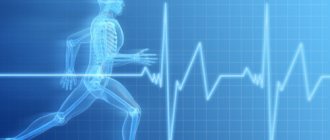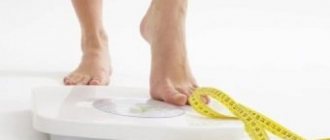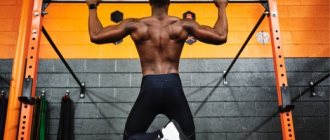Nordic walking with poles, which appeared relatively recently, has captivated many residents of Belarus for good reason. Indeed, it is difficult to overestimate its complex impact on the human body of any age.
By the way, this kind of walking has many names - it is called Nordic, Norwegian, Nordic, Finnish walking with poles - however, it is the same type of walking. Nordic walking with poles is a sport of walking that requires the use of special poles, similar to ski poles.
Nordic walking with poles: an excursion into history
Nordic walking was successfully used in pre-war times, and Finnish skiers can be considered its founders. Athletes were so afraid of losing their shape over the summer that they began to walk in areas without snow and skis, using ski poles when walking. It was then that the effectiveness of such walking was first noticed.
This fact interested sports medicine specialists, and in the 80s the phenomenon of the beneficial effects of such training on the body and its amazing effectiveness were studied. As a result, walking with poles gained recognition first in the Scandinavian countries, and a little later became popular throughout the world.
In Belarus, people learned about such walking relatively recently. But clubs for Nordic walking lovers have already been organized in all major cities.
Recently, Swedish walking with poles has been used not only for general health improvement, but also as a therapeutic and rehabilitation tool. For example, such classes are included in the German rehabilitation program after total leg replacement.
What are the benefits of walking?
Walking has long been considered among people the most accessible and easiest physical exercise. Doctors and scientists have long proven the benefits of this method in maintaining health. And no one will argue otherwise. After all, daily walking has a positive effect on our overall health, and also allows us to maintain good physical shape. We will look at how much time you should spend walking every day, and how walking affects our body.
What are the benefits of walking?
Walking can help maintain normal functioning of the whole body. Moreover, it is not so difficult for a person of any age, and it does not take much time. After all, you can walk from work to work, or go not to the nearest store, but choose the one that is located a little further.
Walking besides keeping the whole body in good shape. They also help cope with depression, improve blood supply to all organs, give a boost of energy and lift your spirits. With regular walking, the leg muscles become stronger, the strength of the joints increases, which reduces the risk of fractures and other injuries. Fast walking or light running has a beneficial effect on the lungs, strengthening the heart and blood vessels. Researchers say that life expectancy directly depends on how much a person walks.
Walking standards
How much to walk a day is up to everyone to decide for themselves. But if possible, you should devote at least half an hour a day to this activity. It is recommended to take walks at a fast pace. If you don’t have any time to walk, then ten minutes can still be found. Even such a minimal walk will improve your well-being and mood, and also help strengthen the body.
Modern life does not leave working women time to visit fitness clubs, swimming pools, and gyms. In addition, not every woman has extra money that she could spend on visiting all these establishments. At the same time, women want to look young and have a strong and healthy body. Therefore, walking in this case is a salvation for women. This is a great way to stay fit and improve your overall health. And most importantly, walking does not require any financial costs.
Walking as a way to lose weight
In order to lose excess weight and, in addition, gain health, you need to walk at least one hour a day, on average. If you walk for half an hour one day, then the next you need to catch up. According to research, 300 kilocalories are burned if you walk two kilometers. In six months, you can thus reduce your weight by six kilograms, gaining health along the way. Walking serves, among other things, as a good preventative measure for many diseases.
And for women expecting a baby, it is extremely useful to walk more.
Any doctor can tell you about this. During walks, preferably, of course, in a park or in the forest, your baby receives an additional dose of oxygen. Therefore, take a walk for yourself and your child’s health. Top
The benefits of Nordic walking with poles; Who is suitable for race walking with poles?
So, who is especially useful for this type of walking? The answer is for everyone, but especially for people with breathing problems, circulatory disorders, osteochondrosis, osteoporosis, arthrosis and excess weight.
Pros of walking with poles:
- suitable for any age;
- economical - you only need special sticks;
- has a minimum of contraindications.
Unlike regular walking, Nordic walking:
- It is distinguished by a more uniform and complex distribution of muscle work.
- Involves both (lower and upper shoulder) girdles, which is especially important for osteochondrosis.
- Trains all organs and systems. Therefore, general hemodynamics and microcirculation improve, and cardiac output increases. Brain and heart activity becomes more efficient.
- It is an excellent gymnastics for joints. After all, it uses all joints, including the spine and shoulders.
- Reduces the load on the spine and joints with increased body weight.
- Takes place in the fresh air, in any chosen place.
- It brings together like-minded people with whom you can talk and just have a good time.
- Normalizes sleep, strengthens the emotional-volitional sphere, helps with stress.
- Burns 50% more calories than regular walking. For example, in 60 minutes you can burn up to 500 kcal.
- Promotes weight loss with a modeling effect and increased vitality.
- Activates brain activity and revitalizes connections between brain areas that “rest” during physical inactivity.
Is walking in place effective for losing weight?
Walking in place can help with weight loss, although it is less demanding in terms of energy consumption than classic walking and even more so running. A person weighing 68 kg burns about 300 kcal per hour of walking at a fast pace. It is clear that the number of calories burned will be less for a person with less weight and vice versa. What about walking in place?
In a study published by the journal Medicine & Science in Sport & Exercise, participants who walked in place for an hour burned an average of 258 calories, compared to about 304 calories for people who walked on a treadmill. The study also found that people who walked in place during commercial breaks burned about 148 calories in 25 minutes. During this time they took 2111 steps.
The key to losing weight while walking is to raise your heart rate to 50-70% of your maximum heart rate. You can achieve this pace by varying the intensity of walking in place and adding arm movements: the more movement, the more calories you burn.
For more effective weight loss, walking in place should be combined with diet and strength training in the gym or at home.
How to wash
Bathing with a hip fracture is one of the most difficult tasks. Most devices for disabled people designed to help with this are not suitable due to the inability to bend the leg and move the patient around the bed.
Stage 1.
When a person is lying down, they wash directly on the bed using a wet sponge and hygiene products. A small part of the body is washed, and then immediately dried. To prevent the mattress from getting wet, waterproof underwear is used. Plus, the sponge wets only a little so that there is no excess water getting on the bed From time to time, you can also use special waterless hygiene products for dry washing. The main thing is not to get carried away with them, since they do not fully clean the skin, and can cause irritation with frequent use.
Stage 2.
When the patient can already walk, devices are used that allow him to safely move into the bathtub and wash himself in the shower in a sitting position. These can be special bath seats or wide chairs.
You need to sit on them from the floor and move your body to the middle of the bath, using the handrail. Then carefully throw your legs over the side. It is better that the patient is helped in this process!
“Is it possible to buy shoes to grow in size?”
– However, what exactly in shoes can cause harm?
– Shoes that are too big can cause harm, not globally, but situationally, for example, disrupting the rhythm of gait, or complicating a child’s life. Of course, you have to buy shoes for your child to grow into. This consideration is purely economic, because the child's foot is growing, and it is difficult to keep up with it. The question is often asked: “How long can you buy shoes to grow in size?” – there is no single answer to this question.
Just imagine that you buy shoes for a child a size larger, but children's sizes are slightly different and the proportions are different, and compared to an adult, this is more than a size larger. For example, you got beautiful shoes of size 38.5, and your size is 37. Most likely, you will not be very comfortable in them. Approximately in this paradigm we need to consider shoes for a child.
Very often you can see a picture on postcards and posters in which a little girl is standing in her mother’s shoes - her feet are pointed inward, her knees are bent - the child does this in order to compensate for the inconvenience of wearing large shoes. Or imagine the gait of a person walking on dry land wearing flippers. To control gait, it is necessary that the length of the shoe matches the length of the foot, not necessarily on the inside, but also on the outside. This very often applies to winter shoes. You probably know from your children that they don’t walk well in winter shoes, because they are big and heavy.
Shoes should not be heavy; high heels greatly increase the weight of the shoes. Shoes should not be too hard. How do people walk in ski boots? Not very confident. Imagine the feeling of a child walking in hard, high-backed boots. How much can you walk in ski boots?
- Hell!
“Little children live in approximately the same hell, for whom they put on tall, heavy shoes and a pair of socks.
What is the secret of rejuvenation
It’s simple: a person goes and gets the necessary effects to the maximum. First of all, there is a neurotrophic effect. The brain begins to better regulate processes in the body, which makes organs and systems work better, in particular the hypothalamus, which is responsible for metabolism and hormonal metabolism. When walking, blood flow to the bone marrow is stimulated. And in the bone marrow we have stem cells - these are hematopoietic stem cells, from which all blood cells are then formed, and multipotent stem cells, from which the remaining cells of the body are formed.
A multipotent stem cell gives rise to the common precursor of all nerve cells, i.e., the stem cell from which nerve tissue will arise. And this cell from the bone marrow, through the blood, enters a special niche of the hippocampus and there begins to produce new nerve cells. That is, through walking, which stimulates the blood flow of the bone marrow, we promote brain renewal. Plus, a multipotent stem cell also provides a common precursor for all cartilage cells, i.e., it starts the process of cartilage tissue formation. As a result, cartilage cells enter the intervertebral discs and joints, and there they become chondroblasts, or cells through which cartilage is renewed. The renewal of the whole organism occurs in a similar way. Let's say a multipotent stem cell gives birth to a bone cell. Accordingly, the bones are strengthened. Because, entering the bone from the bone marrow, this cell becomes an osteoblast during the process of osteogenesis. Osteoblasts are the cells from which new bone tissue is formed. As a result of the birth of new osteocytes, a person goes through osteoporosis.
And this happens precisely because of walking, and not by eating tons of calcium. Because bones do not need calcium, which is prescribed in huge doses by doctors (from its excess, kidney stones are formed, and calcium is deposited in blood vessels), - bones need new healthy osteocytes, i.e. bone cells. New healthy osteocytes will pick up calcium themselves - from the blood, from any foods, and then the bone will become stronger.
Long walking, self-massage and... herring. How to resist a cold? More details











